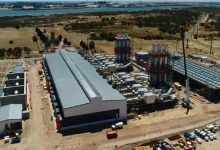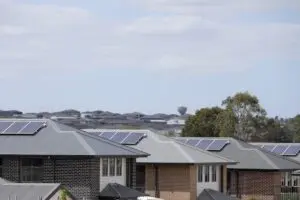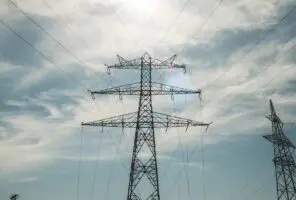AGL on Monday formally opened the first gas generator to join the country’s main grid since 2012, the 210MW Barker Inlet facility near Adelaide that has been built at a cost of $295 million.
Barker Inlet will specialise in delivering fast response to demand peaks and troughs, and is designed for a grid that is already dominated by wind and solar (South Australia sources well over 50 per cent of its supply from those variable sources) and the introduction of 5-minute settlement periods from the middle of next year.
It will also replace units at the ageing Torrens Island A gas generation units, which will close in 2020. It is the first new gas plant in the main grid since 2012, when the Mortlake facility in Victoria was opened. (Mortlake is operating at half capacity because of a long term outage to one of its units)>
“At AGL we’re building new capacity and firming generation because we know this is what the market needs and today we are delivering on this commitment,” AGL CEO Brett Redman said.
“This power station is highly efficient, with generating units capable of operating at full capacity within five minutes of starting. This is something not capable from older coal and gas power stations.
“This is important, because it will allow us to provide a rapid response to changes in renewable generation supply and demand – particularly wind generation here in South Australia.”
Those comments were made in the presence of energy minister Angus Taylor (above, second left), attending the opening of a large generator in Australia for the first time since his appointment last August.
(He did attend the opening of the Thunderbolt run-of-river hydro power station in Tasmania last week, but that facility is sized at less than 1MW and is too small to be registered in the NEM).
Since the start of 2018, according to Clean Energy Council data, there have been some 60 large scale wind and solar farms have joined the grid, and many, including the Crookwell 2 wind farm in Taylor’s own electorate of Hume, have had official ceremonies. Taylor has not attended any of them.
That should be no surprise, given Taylor has made it clear that he thinks that there is too much wind and solar in the grid already, and has made his view clear that more “dispatchable” power is needed, and has criticised AGL for its decision to close the ageing and unreliable Liddell coal generator in NSW in early 2023.
“The Barker Inlet Power Station will ensure South Australians have access to increased firm generation that will lower prices and increase supply”, Taylor said in a statement.
“The station will be able to operate at full capacity in just 5 minutes. This rapid response time adds reliability to the grid, ensuring the lights stay on when solar and wind supply decreases.”
Taylor said at a press conference that Barker Inlet will provide “affordable” power to fill in the gaps between increasing amounts of wind and solar. But that requires clarification.
Barker Inlet will actually be quite expensive, probably costing around $150/MWh, but it will only operate in short bursts, and AGL’s Redman said “firmed wind and solar” should only cost around $75/MWh, given the low costs of renewables.
Taylor has lamented the lack of investment in dispatchable generation, although it’s ironic that AGL’s Redman, along with other energy CEOs and experts, say it is the government’s lack of an over-arching energy policy, and its repeated interventions in the market that is making investment difficult.
The investment in Barker Inlet was announced more than two years ago, and includes 12 fast-start gas “reciprocating engines” (of 18MW each) that will replace the slow (12 hours to full capacity) and ageing units at the Torrens Island A generators in South Australia, and will mostly be used at times of peak demand.
It will be better able to respond to the growing penetration of wind and solar in that state (now more than 50 per cent), and to the introduction of 5-minute settlements from the middle of next year.
South Australian Energy Minister Dan van Holst Pellekaan (pictured above right) said AGL’s investment was good news for the affordability and reliability of electricity supplies in South Australia, and would allow more renewables to be brought into the system. The state Liberal government aims to reach “net 100 per cent renewables” by around 2030.
“South Australia is leading the nation in the transition to renewable energy and the Barker Inlet Power Station will have an important role in producing more affordable, reliable and cleaner electricity,” van Holst Pellekaan said.
“Modern fast start gas generators burn less gas and provide supply when renewables can’t, meaning lower cost, lower emissions and greater reliability.”











